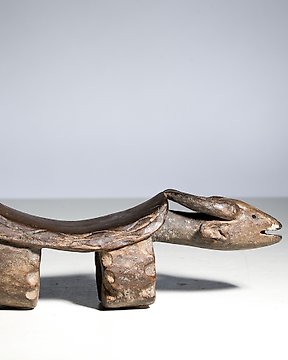
頭枕 - 羅拉巴 - 剛果民主共和國
編號 83214111

編號 83214111

Commonly referred to as a Katanga cross, this X-shaped object of cast copper comes from Katanga, a rich mining area in the southeastern part of the Democratic Republic of the Congo along the Kasai River. For centuries these crosses served as indications of wealth and were used for paying dowries and for trade. Since they have been found in cemeteries, they have also been associated with funeral rituals. The most common forms of traditional money in Africa were made of metal, forged or cast - which had the great advantage of storing wealth in a form that could be melted down and turned into a tool or weapon when needed. The Congolese saw the non-ferrous metals - copper, lead and tin - as very precious materials. Items made of these metals were a widespread medium of exchange and important in the conclusion of social contracts, such as marriage. In the early 1900s, a cross could buy five to six chickens, two pieces of good cloth, eight to nine pounds of rubber, or six axes. The Katanga region declared its independence from the DRC shortly after Belgium declared the region independent in 1960. In 1961, Katanga issued its first coins.
Dimensions: 24 cm x 24 cm
Weight: 920 grams
Date: 1st half of the 20th century
Provenance: Obtained from a Dutch private collection.